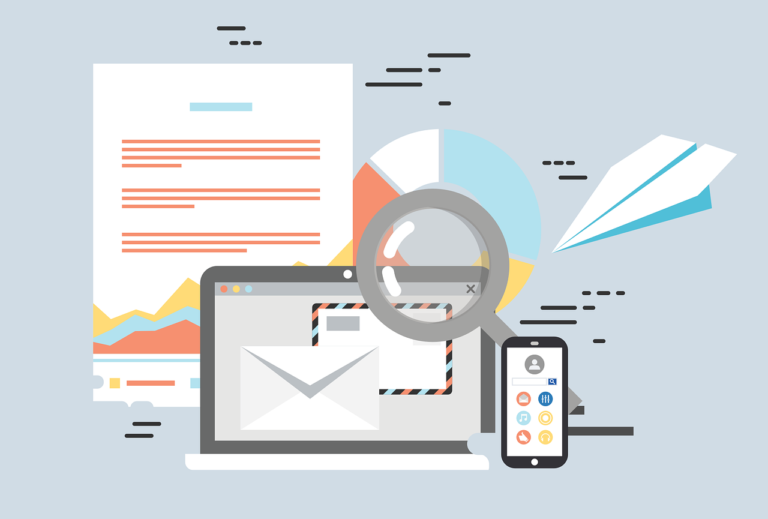I recently attended a Salesforce event in Boston. Though I am not a customer, partner or vendor of Salesforce, I like to attend their conferences, because they are more about current technology trends than they are about the CRM tool. They told many great stories about how companies are changing the world by leveraging new technology trends. The trick to really understanding how to apply these learnings to your organization is to think about what you are trying to achieve. Ensure you are not using these shiny new technologies just because they are cool or because everyone else is using them.
The goal of marketing remains the same
My first takeaway was that the end goal of what marketing as a function is trying to achieve has not changed at all. People want to buy from companies they trust. The goal of marketing is to build trust with potential customers and maintain that feeling of trust with existing customers.
Before the dawn of the digital age, word of mouth was the most popular method that people used to decide what to buy and from whom. Existing customers served as trusted advisors for potential new customers. Building trust is the way that companies sell to and keep their customers today as well.
Then what has changed?
What is different today, is that now there is so much information and so many ways to get that information, that it becomes hard for the customer to figure out what is true and who to trust. An interesting statistic that was shared at the event was that 90% of the world’s data has been created in the last 12 months.
In addition, the buyer could search for information on the Internet or receive information from companies in the forms of emails, SMS messages, notifications through the website, messages on Facebook, Twitter and many other ways. They could also search or receive these messages on their desktops, laptops, iPads, mobile phones or smart watches.
It is the responsibility of companies today to help the buyer cut through the noise and consume the information that is relevant to them and helps them figure out what product or service will best meet their need. The challenge or opportunity, depending on how you look at it, is how do companies leverage all this data and these different technologies to deliver relevant messages to people through their preferred way of receiving them? The focus should be to begin building this trust with potential buyers and existing customers by making them feel like they have a 1 on 1 relationship with the company.
What technology trends can help you do this?
The 5 key technology trends that were the underlying theme of most sessions at the event were:
- Cloud – In the State Of The Cloud report by RightScale, 95% of the enterprise organizations that were surveyed used cloud technologies. What that tells me is that IT organizations are moving away from managing hardware to managing software. The availability of applications in the the cloud has raised the bar for performance, stability and time to market for new functionality. This has leveled the playing field to some extent as similar capabilities could be available to companies to use as they try to sell to, service and keep their customers.
- Mobile – Technology companies have been talking about making their tools available on a mobile device for some time now. What is new is that they are now talking about mobile first and mobile only. Techcrunch predicts that by 2020 there will be 6.1B smart phones in the world. Compare this to the projected population in the world in 2020 at 7.7B people. A large number of the smart phones will be the only devices people use to run their lives and their business. This makes it all the more important to figure out how to build products that are easy to use on a mobile device and also build those relationships with potential buyers and existing customers using this device.
- Social – Human beings are social and want to be part of a community. Though communities have been around forever – the difference now is that they are online. Social is nothing but an online community – the size of which is controlled by the individual. Social is both an outbound messaging channel so companies can deliver targeted messages using Facebook or Twitter; and it is also a data source to get to better know your buyer. Social is no longer just a marketing channel but it has also become a place where companies can service their customers and sell additional products to existing customers.
- Data Science – Vcloudnews states that every day 2.5 quintillion bytes of data are created online. What does that even mean? The challenge is making sense of this data so that companies can use the data to better understand their buyers. This is in fact a science, because if analyzed and leveraged correctly companies can create superior, personalized experiences for their potential buyers and existing customers which will undoubtedly lead to more business for the company.
- IoT – My definition of IoT or the Internet of things is the ability for a device to record an activity and trigger a communication when a certain condition is met. Companies have only started to scratch the surface on the use cases for this. The concept of devices triggering actions has been around for a long time – e.g. a thermostat that turns off the heat when a certain temperature is reached; but what is different about IoT is the ability for the device to trigger a communication that can be accessed on a variety of devices when something happens.
Some companies get excited about the potential that these new technologies offer, others are overwhelmed and not sure how to best leverage these. What is important to keep in mind is the end goal – building trust through a personalized and superior experience. Use only those technologies that help you achieve that objective. Remember, at the end of the day, these technology trends simply equip us, and it’s really the relationship with your customer that matters.



